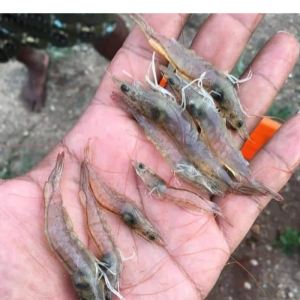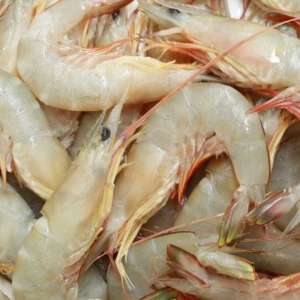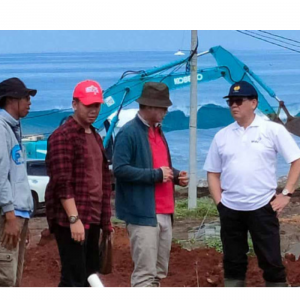
How to Use Minerals Effectively in Shrimp Farming
| Thu, 14 Apr 2022 - 11:35
Minerals play an important and necessary role in the process of cultivating white leg shrimp (Vannamei). However, it is necessary to understand how to use minerals to optimize shrimp farming performance.
The Relationship Between Minerals in Shrimp Farming
Shrimp absorb minerals, create new shells, balance osmotic pressure, and regulate blood pH. The process of peeling and creating shells takes place smoothly to help shrimp grow quickly, have good resistance, and less disease. Minerals participate in catalyzing biochemical reactions, mineral deficiency in shrimp slows down biochemical reactions, affecting other activities such as consumption, absorption, and food metabolism.
Minerals play an essential role in enzymes, vitamins, hormones, pigments, cofactors involved in transport in metabolism, catalysts, and enzyme activation.
Minerals participate in cellular metabolism, maintain acid-base balance, enhance immunity, eliminate stress, improve disease resistance, and other physiological functions. Shrimp can absorb and excrete minerals directly from the aquatic environment, through the gills and body surface.
Read more: Why Need to Add Minerals to Fish and Shrimp Feed?
Minerals have the following forms: macro minerals (Ca, P, Mg, K), trace minerals (Cu, Fe, Zn, Mn), inorganic minerals (MgSO4/magnesium sulfate, CaCO 3/Calcium carbonate, etc.) ZnO (oxide zinc), organic minerals (Metal -Specific Amino Acid- complex; Metal Amino Acid Chelate)
What Causes Mineral Deficiency?
At present, farmers mainly use inorganic minerals (inorganic salt compounds). Inorganic minerals are usually cheap, have low use value, and contain many impurities. The amount of minerals required for shrimp in the above product is not enough, leading to a situation where the mineral content of shrimp is very little absorbed, despite using high frequency during farming, in large quantities during the farming season.
Is there any other factor affecting the absorption of minerals of white leg shrimp that farmers have overlooked?
In addition to the above reasons, there are many other factors to consider such as:
1. High density shrimp farming, alum and heavy metals in high ponds, ponds rich in organic matter, high toxic gases.
2. Low salinity in water : When cultured at low salinity, the environment is often lacking in minerals, leading to a difference between the osmotic pressure between the shrimp body and the external environment, resulting in the shrimp taking water automatically through the gills and intestine. It is more difficult for shrimp to obtain dissolved mineral salts in water culture, so minerals must be added directly in the diet.
Read more: How to Feed Shrimp Effectively in Low Salinity
3. Clay particles strongly absorb dissolved ions of minerals, when the pond is rich in clay, many suspended substances easily cause mineral loss.
4. Shrimps are sick, stressed, and mineral absorption is very poor. Supplementing minerals at the wrong time will affect the absorption process.
5. Shrimp at different stages will have different mineral needs, need to adjust the frequency and dosage when adding minerals.
6. Shrimp absorption of inorganic minerals is limited due to low digestibility of inorganic minerals, compared to organic minerals. Inorganic minerals combine with anti-nutrients in food, limiting the absorption of this mineral through the food route. The stomach acid of shrimp is high, mineral absorption is poor. Mineral absorption in shrimp mainly takes place in the hindgut, ionic form, low-valence ions have a higher absorption rate than high-valve ions, causing deficiency of high-valence ionic minerals such as Ca 2+ , Mg 2+
How to Properly Supplement Minerals?
Use higher organic minerals, instead of lower level minerals (inorganic minerals).
1. Use organic minerals (chelates). Chelates consist of two parts, one carrying a metal called ligandum, the other a metal. On the surface of ligandum there are negatively charged amino acids, which combine with metal ions. In the chelate form, the mineral does not dissociate into ions, does not form complexes, is insoluble with phytic acid, oxalic acid or with phosphate and sulphate radicals. Competition for absorption between minerals is also limited.
Read more: Trends and Challenges in Indonesia’s Aquafeed Industry
2. Using potassium permanganate KMnO 4 , PAC[Al 2 (OH) n Cl 6-n ] m or Al 2 O 3 , deposit clay particles, silt, and suspended matter before mineralizing into ponds and ponds.
3. Using probiotics with microbial components Bacillus, Thiobacillus, Clostridium, Lactobacillus, Nitrosomonas, Nitrobacteria , combining organic enzymes, catalyzing the decomposition of microorganisms such as: Protease, Phytase, Lypase, Amyllase, Cellulace, Chitinnase... limit toxic gas from rising before mineralization.
4. Keep pH stable with alum Al 2 (SO 4 ) 3.14H 2 O, dose of 5 kg aluminum alum/1,000m 3 of water, before mineralization. Use CaCO 3 , CaMg(CO 3 ) 2 , NaHCO 3 to stabilize alkalinity in ponds.
5. Use organic acids to mix feed, reduce gastric mucosal acid, increase absorption when mixing minerals in feed for shrimp.
6. Choose a time when shrimp are about to molt simultaneously at 21-22g at night, or 3-4g in the morning, mineralize, increase mineral absorption for shrimp, limit mineralization during the day.
7, For shrimp farming with low salinity , it is necessary to combine and supplement at the same time with mineral fertilizers and mixed minerals for feeding.
Read more: Macronutrient Research in Aquaculture Nutrition
Mineral-deficient shrimp have manifestations such as body curvature, deformity, deformity, turbidity of muscle vertebrae, reduced survival rate, slow growth, reduced molting frequency, molting with shell adhesion. Shrimp with soft shell, hard shell time lasting more than 2 hours due to lack of minerals, is a good opportunity for viruses, bacteria, parasites... to attack and cause disease.
Other manifestations of mineral deficiency such as shrimp weakness, slow digestion of food, bad liver, incomplete intestinal tract, faint.
Shrimp farming in a low salinity environment, shrimp lacks potassium, usually on the shrimp body there are small black spots on the shell, or opaque white spots on the body, in the flesh (turbidity), mild cases are easy to treat, if the shrimp has just been chiseled, the body is very difficult to treat, leading to mass death of shrimp.
Vannamei shrimp has a fast growth rate, due to the continuous molting of shrimp, the need for minerals is very high. People should adjust the stocking density to suit pond and lake conditions, investment ability, technical grasp.
—
This article first appeared at Tepbac.com. The accuracy of the information and the effectiveness of cultivation contained therein is not Minapoli's responsibility.






















